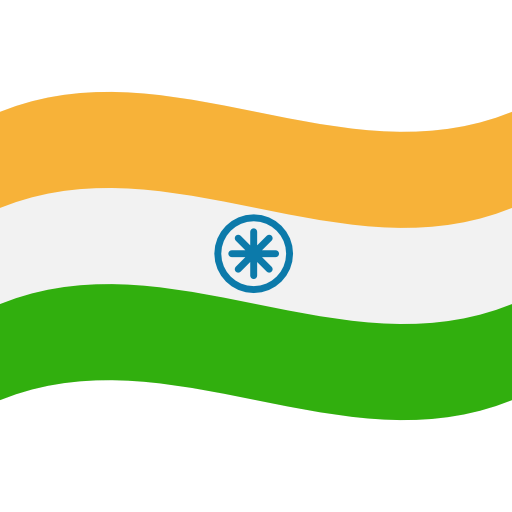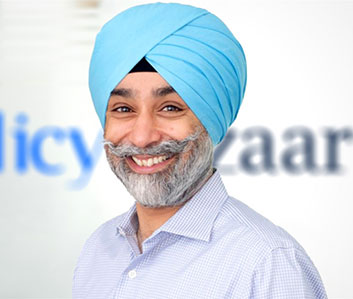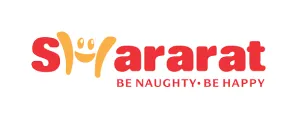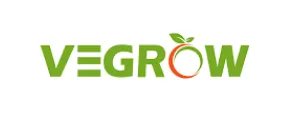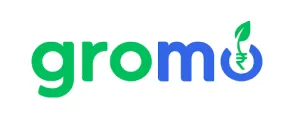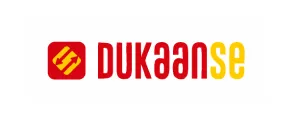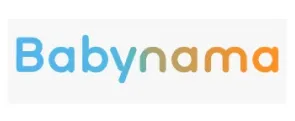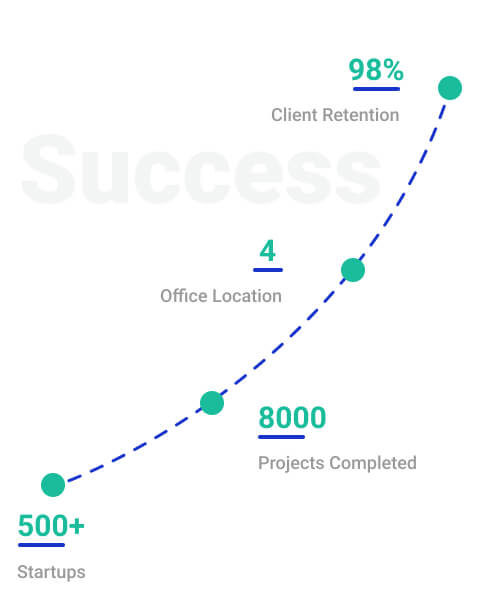Trademarks are unique signs identifying goods or services from a company. They can be designs, pictures, or expressions, which are considered as being important for differentiating from competitors and building their own image of the brand. Protected under intellectual property laws, trademarks are safeguarded from infringement by the Trademark Act, 1999.
To register a trademark is important to protect trademark rights, preventing others from copying or misrepresenting products. Trademarks help customers recognise brands instantly, like Nike's tick or Puma's jumping wildcat logo.
Types of Trademarks in India
Given below are the types of trademark to register in India:
|
Type of Trademark
|
Description
|
Examples
|
|
Pattern Mark
|
Characterised by a distinctive pattern capable of identifying products or services originating from a specific source, making them discernible from others.
|
Iconic Louis Vuitton checkerboard pattern
|
|
Label Trademark
|
Protects the label/packaging of a product and the trade dress of the same to ensure the protection of the entire packaging/label of a product, which is unique and distinctive to any business and acts as a identifier of a brand.
|
Coca Cola
|
|
3D Trademark
|
Makes use of the three-dimensional shape of a product or its container to achieve distinction in the marketplace. Must be visually representable and distinguishable from other goods and services.
|
Zippo lighter, Coca-Cola bottle
|
|
Slogan/Tagline
|
Creative and distinctive phrases that immediately remind the consumer of the product. Offers exclusive rights for the brands to use them in their advertising campaigns.
|
Nike's ‘Just Do It’
|
|
Device Trademark
|
Visual elements used to create unique and recognisable representation. These trademarks have artistic elements such as symbols and a word mark and can be a combination of both.
|
PUMA’s symbol
|
Choosing the Right Trademark Class
- Trademark classes categorise goods and services into 45 distinct classes.
- Choosing the correct class is essential for trademark validity.
- Ensure your trademark covers all relevant areas of your business.
- Apply under multiple classes if your business operates across different areas.
- Commonly chosen trademark classes in India include:
- Class 9: Including computer software and electronics
- Class 25: Covering clothing
- Class 35: About business management and advertising
- Class 41: Related to education and entertainment
What are Trademark Symbols?
Among the trademark symbols include:
|
Symbol
|
Meaning
|
Usage
|
|
®
|
Registered trademark
|
Indicates that the trademark is registered, providing the highest level of protection. Others are prohibited from copying or reusing it without permission.
|
|
™
|
Trademark pending
|
Used while awaiting review by the Registrar. It signals a claim of rights to the mark, potentially granting common law trademark rights.
|
|
SM
|
Service mark
|
Denotes a service mark, asserting rights in connection with services (e.g., banking, legal services). Like the TM symbol, it does not automatically guarantee legal protection.
|
Benefits of Trademark Registration
Registering your trademark offers several benefits, some of which are:
- Exclusive Rights: TM registration grants exclusive rights for mark usage.
- Legal Protection: Registered trademarksget the protection from the law which in this case is under the Trademarks Act, 1999.
- Brand Recognition:Registration helps business in building of brand recognition and consumer trust.
- Business Asset: Trademarks can be assets for licensing, franchising, or sale.
- Market Advantage: To register a trademark provides a competitive edge by safeguarding market share.
- Consumer Trust: Enhances consumer confidence in product quality and authenticity.
- Global Protection: International treaties like the Madrid Protocol extend trademark protection.
- Brand Expansion: Allows expansion into new product lines under established brands.
- Infringement Remedies: Provides lawful or legal way for seeking remedies against infringement.
- Brand Loyalty: Helps the brand’s loyalty by channel of positive consumer experiences.
- Licensing Opportunities: Trademarks can be licenced and this helps to expanding brand reach.
- Business Expansion:Helps in more business expansion and franchising.
Who is Eligible to Register Trademarks?
The detailed list of eligible entities who can register for a trademark are:
|
Applicant Type
|
Eligibility
|
|
Individuals
|
Any individual person.
|
|
Joint Owners of a Company
|
Co-owners of a business entity.
|
|
Proprietorship Firms
|
Sole proprietorships.
|
|
Partnership Firms
|
Firms with a maximum of ten partners.
|
|
Limited Liability Partnerships
|
LLPs registered under applicable laws.
|
|
Indian Companies
|
Companies registered under Indian laws.
|
|
Foreign Companies
|
Companies registered outside India.
|
|
Trusts
|
Registered trusts.
|
|
Societies
|
Registered societies.
|
Documents Required for TM Registration
For Trademark registration online, the following documents are must:
|
Document
|
Description
|
|
Image of the trademark
|
Visual representation of the trademark
|
|
Power of Attorney (drafted by us)
|
Legal authorisation for representation in trademark matters
|
|
User affidavit (if prior user of trademark)
|
Statement affirming prior use of the trademark
|
|
TM-A form (drafted by StartupFino)
|
Official application form for trademark registration
|
|
ID Proof of the applicant along with Address
|
Identification document and proof of address of the applicant
|
Other Preliminary documents needed for brand registration are:
|
Preliminary Details
|
Description
|
|
Applicant name
|
Name of individual, business, or organisation applying
|
|
Business Type
|
Type of business entity (e.g., private limited, partnership)
|
|
Objectives of the Business
|
Overview of company's nature of business under the trademark
|
|
Name of Brand/Logo/Slogan
|
Specific name, logo, or slogan intended for trademark
|
|
Registration Address
|
Official address of the applying organisation
|
|
Prior User Date
|
Date of prior use of the brand name (if applicable)
|
What is the Trademark Registration Validity in India?
The validity of a registered trademark in India is initially for a period of 10 years, starting from the date of filing the trademark application.
To maintain the validity of the trademark registration, it is essential to renew the certificate before its expiration. The renewal can be done indefinitely in again 10 year terms for keeping ongoing protection and preserving the rights associated with the trademark
What is the Trademark Registration Price?
The Trademark registration cost is as given below:
|
Item
|
Description
|
Amount
|
|
Government Fee
|
|
Individual or Proprietorship Firms
|
Rs. 4500/-
|
|
Company, LLP, Firm, NGO, etc. recognized as a Startup or Registered MSME
|
Rs. 4500/-
|
|
All Others
|
Rs. 9000/-
|
|
Professional Fee
|
This fee is paid to the trademark attorney or agent handling the registration. The professional fee can vary based on the complexity of the case and the experience of the professional.
|
Variable
|
|
GST on Professional Fee
|
GST at a rate of 18% is applicable on the professional fee.
|
18% of Fee
|
|
Stamp Duty and Notary Charges
|
Charges for notarising the user affidavit and attorney authorization documents. Notary charges may vary, while stamp duty is a fixed charge imposed by the state. The cost of stamp paper and notary is not included in the registration packages.
|
Variable/State-fixed charge
|
How Much Time for Trademark Registration?
Given below is the trademark registration time involved in the process:
|
Process Stage
|
Description
|
Timeframe
|
|
Filing of Trademark Application
|
Completion of necessary documentation and filing the application within 24 hours.
|
Immediate
|
|
Immediate acknowledgment is generated upon submission.
|
|
Processing and Examination
|
The Trademark Office scrutinises the application for defects, taking about one to three months.
|
1-3 months
|
|
Examination Report and Reply
|
If objections are raised in the examination report, a response must be filed within 30 days of report issuance.
|
Within 30 days after report issuance
|
|
Show Cause Hearing
|
In case objections persist, a hearing may be scheduled, typically one to several months after the response is submitted.
|
One to several months after response
|
|
Publication in the Trademark Journal
|
If the examiner is satisfied, the application is published in the Trademark Journal.
|
After examination and resolution of objections
|
|
A waiting period of 90 days is provided for any oppositions to be raised by the public.
|
90 days after publication
|
|
Registration of Trademark
|
If no oppositions are raised or if oppositions are decided in your favour, the trademark is registered.
|
After the opposition period
|
|
A certificate of registration is issued.
|
|
The entire process can take approximately 6 to 9 months.
|
6-9 months
|
Trademark Registration Online Procedure for Brands in India
For registering a brand in India, the following steps must be followed:
Step 1: Trademark Application
- Conduct trademark search.
- File registration application with Trademark Registrar.
Step 2: Vienna Codification Process
- International system categorising figurative elements of trademarks.
- Applied post-application filing by Trademark Registrar.
Step 3: Trademark Examination
- Assigned to Trademark Registrar's officer.
- Assessment for accuracy, generation of examination report.
- Application accepted, published, or objections raised.
Step 4: Trademark Journal Publication
- Accepted trademarks published weekly.
- Public can raise objections within 90 days.
Step 5: Trademark Hearing
- Scheduled if objections are raised.
- Applicant and opposing party present arguments.
- Officer decides on acceptance or rejection.
Step 6: Trademark Registration
- Registration certificate issued if no objections.
- Trademark officially registered with ® symbol.
Step 7: Trademark Objection
- Registrar seeks valid reasons for registrability.
Step 8: Trademark Opposition
- Third party files objection against registration.
Step 9: Trademark Renewal
- Trademark valid for ten years and choose to renew it to maintain protection.
Trademark Objections
- Issues may arise with the trademark application, such as incorrect details or offensive terms.
- Status changes to "Objected" on the register.
- Respond with a well-drafted explanation and supporting documents.
- Response acceptance leads to further processing and also rejection may result in a hearing.
- Process takes 2-4 months and the approval chances increase if objection is resolved.
Trademark Opposition
- Third parties can oppose a trademark application.
- Opposer files a notice with the trademark examiner.
- Applicant must respond with a counter statement within 2 months.
- Registrar may dismiss or call for a hearing.
- Ruling can be appealed to the Intellectual Property Appellate Board.
Why Choose Startupfino for Trademark Registration?
Startupfino is a company that specialises in offering complete services for Trademark registration, filing, renewal and other supplementary services. We can help you with everything from providing advice in the initial phase to ensuring that you meet all the necessary requirements and fulfil all post registration compliances.
|
Trademark
|
Patent
|
Copyright
|
|
What’s protected
|
Symbols, phrases, or designs distinguishing goods or services' origin.
|
Inventions, processes, compositions of matter, or improvements.
|
Original works like literature, music, art, and software.
|
|
Requirements for protection
|
Distinctiveness and identification of the source of goods or services.
|
Novelty, utility, and non-obviousness.
|
Originality and tangible expression.
|
|
Term of protection
|
As long as it's used in commerce.
|
Up to 20 years from filing.
|
Author's life plus 70 years.
|
|
Rights Granted
|
Right to use the mark exclusively and prevent others from using similar marks that may cause confusion.
|
Right to exclude others from making, using, selling, or importing the invention.
|
Exclusive rights to reproduce, distribute, perform, display, and create derivative works.
|






